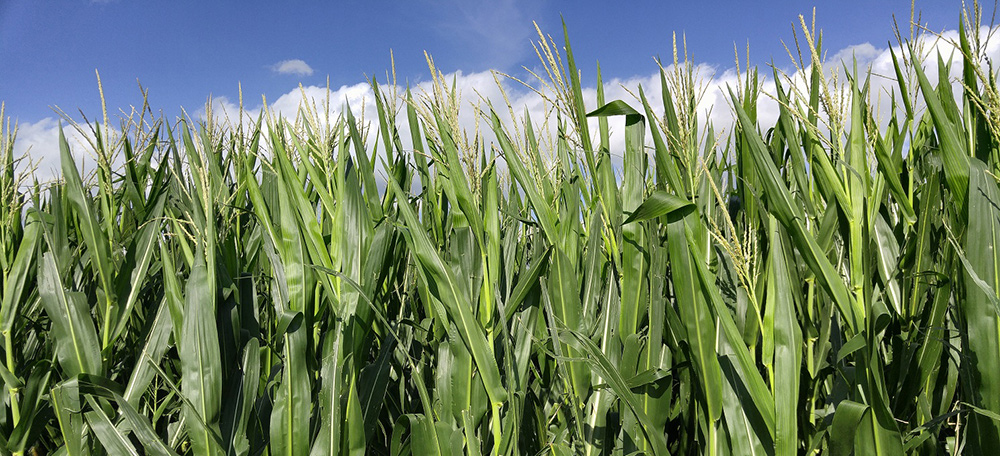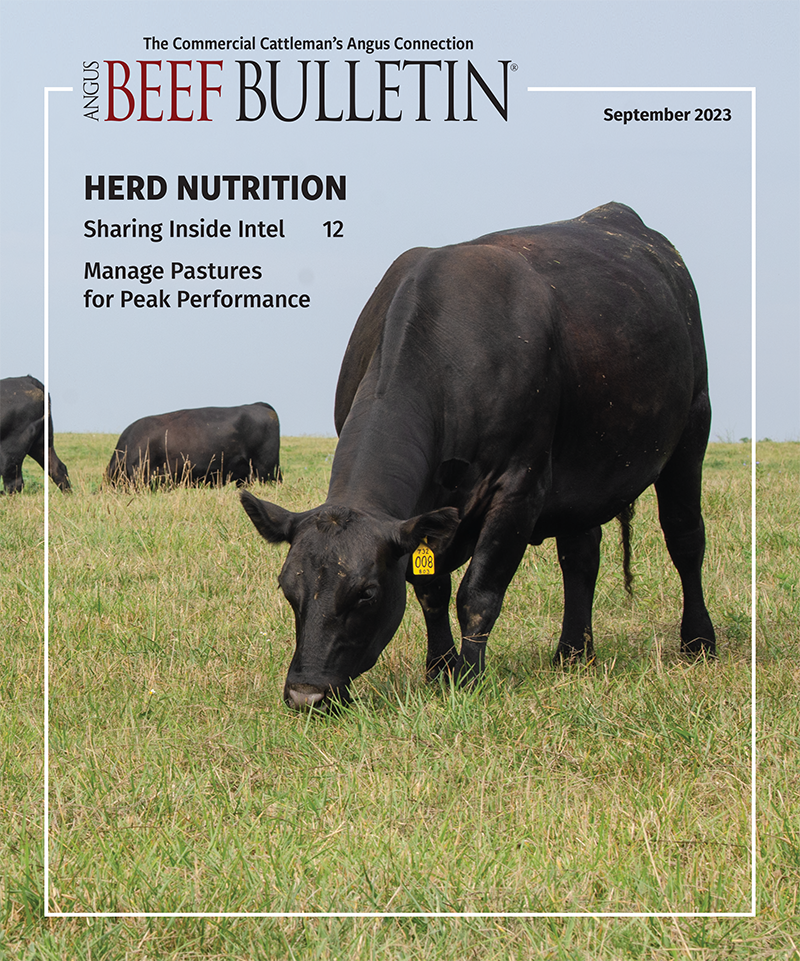
Is That Corn Crop Worth More as Silage or Grain?
As weather issues cause concern about corn yields and reduce forage supplies, farmers evaluate options.
Ongoing dry and drought conditions in many parts of the state are supporting hay and forage prices as we look toward this fall. Perennial dryland hay production in many parts of Nebraska has been less than average. Forage production on rangeland and pasture in central and eastern Nebraska is, in many situations, significantly less than average. This diminished production is going to result in less fall and winter grazing.
Nationally, the stocks of corn and the current crop in much of the Corn Belt are estimated to be adequate to support December corn futures trading near $5.50 per bushel. With harvested forage supplies being tight in much of Nebraska, harvesting corn for silage may be a good option this year, especially with fields that are drought-stressed. However, having the experience and facilities to put up silage is an important consideration.
When evaluating whether to harvest a field for silage or grain, the issue of how to price and value the corn is often a point of uncertainty and is subject to variability. Corn silage is usually priced at one of three points — standing in the field, packed in the silo, and delivered in the bunk.
Corn silage standing in the field
University of Nebraska–Lincoln (UNL) research has shown that corn silage priced standing in the field before harvest should be valued at 7.65 x the price per bushel of corn where a ton of corn silage is harvested at 60%-65% moisture. This multiplier value is consistent regardless of corn price.
With the historic basis for corn, it is estimated corn will be near $5.00 per bushel at harvest in Nebraska. Corn at $5.00 per bushel x 7.65 = $38.25 per ton in the field. This accounts for not having to combine or haul grain to market, but also should be harvest corn price, as we add storage costs to silage. Corn price also increases throughout the year due to storage, at least on average across many years of data.
Corn silage packed in the silo
Harvest, hauling and packing expenses can vary. The 2022 Nebraska Farm Custom Rates publication showed an average custom rate of $13.50 per ton. $38.25 per ton plus $13.50 per ton for harvesting, hauling and packing equals $51.75 per ton in the pile. When $3 per ton is added for storage expense, the price per ton is $54.75.
Corn silage delivered in the bunk
The ensiling process will cause shrink and dry-matter (DM) loss from 10%-20% or more from when silage is packed into the silo until it is removed to be fed. With 10% DM shrink, the value of silage delivered to the bunk would be $60.83 per ton. If the shrink loss is 20%, then the value of silage would be $68.44 per ton. Excellent information is available on the beef.unl.edu website illustrating the effects of covering, packing and other management factors to decrease silage shrink.
Comparing corn silage under current market conditions to other feed resources can be helpful in evaluating whether to harvest a field for silage or as grain. When comparing nutrients in feeds to one another, they should be compared on a price per pound on a DM basis consumed by the cattle. This takes into account all waste loss and expense. The following examples are compared to one another on a price per pound of total digestible nutrients (TDN; energy) on a DM basis delivered to the bunk.
- Corn silage priced at $60.83 per ton that is 35% DM and has a TDN of 72% on a DM basis would cost $0.12 per pound (lb.) of TDN.
- Corn silage priced at $68.44 per ton that is 35% DM and has a TDN value of 72% on a DM basis would cost $0.14 per lb. of TDN.
- Wet distillers’ grains plus solubles (WDGS) at $100 per ton delivered that is 35% dry matter, has a TDN of 108% on a DM basis and shrinks 10% would cost $0.146 per lb. of TDN.
- Corn priced at $5.30 (average price for the year if $5.00 at harvest) per bushel that has a TDN value of 83% on a DM basis would cost $0.134 per lb. of TDN.
- Grass hay priced at $180 per ton that has a TDN value of 53% would cost $0.199 on a DM basis.
There are several factors to consider when evaluating whether to harvest corn for grain or for silage. Both methods of harvest have advantages and disadvantages, depending upon an operation’s goals and objectives. Tight forage supplies in many parts of Nebraska combined with current corn market conditions may heighten the attractiveness of harvesting corn for silage this year as a forage source. For more information on harvesting, storing and feeding corn silage, see the video presentations from the Silage for Beef Cattle Conferences at the beef.unl.edu website.
The nutrient or fertilizer value of manure from cattle fed corn silage should also be taken into account in determining the value of corn silage. In operations where the nutrient value from manure is utilized with cropping systems, this manure value should be credited back against the cost of the corn silage. An article in the Progressive Forage Magazine titled “Silage pricing: Did you account for the manure?” highlights this topic.
Drought-stressed Corn for Silage
Harvesting drought-stressed corn as silage may be an option to salvage the crop and also produce needed forage. Producers considering harvesting drought-stressed corn should also evaluate the effects of doing so on future crop production. In a July 2017 issue of CropWatch, Bob Klein addresses this topic in “Should You Hay or Cut Silage from Drought-Damaged Corn Fields?”
The quality of drought-stressed corn silage can vary, but is usually 85%-95% the energy value of regular corn silage. A good measure to consider is doing a starch analysis. If you divide the starch % (DM basis) in corn silage by 0.70, that gives you an indication of the grain content in silage, which may be very important in drought-stressed or damaged silage. With drought-stressed corn, caution should be used in harvesting if high nitrates are present. Ensiling can reduce nitrates by 40%-60%. Nitrates accumulate in the bottom of the stalk; so raising the cutting height can affect final nitrate concentration in silages, as well as yield. For more information on feeding and pricing drought-damaged corn silage, please see the article “Options for Drought Damaged Corn Fields” and the NebGuide “The Use and Pricing of Drought Stressed Corn” (G1865). Both resources can be found at the https://beef.unl.edu website.
Editor’s note: Aaron Berger is a Nebraska Extension beef educator and Galen Erickson is a Nebraska Extension beef feedlot specialist. Listen to a discussion of the content in this article on this episode of the BeefWatch podcast. You can subscribe to new episodes in iTunes or paste http://feeds.feedburner.com/unlbeefwatch into your podcast app.



